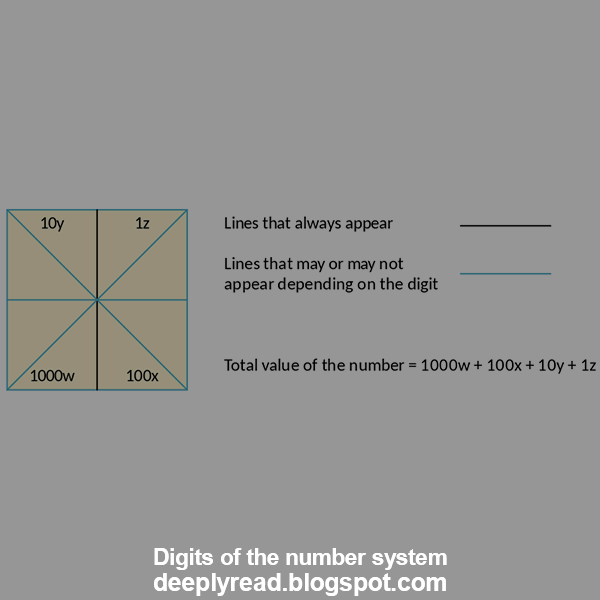13. at the end of the century, in what is now the border region between France and Belgium, there was a system of numbers developed by Cistercian monks. No one knew about these numbers and the number system, which was like a puzzle-until 20 years ago, David A. Until a scientist named King discovered this system…

The book passwords of the monks, written by King, contains the first history of this remarkable system of numbers from the Middle Ages, unknown to most experts in both Medieval Studies and the history of Mathematics.
It was used by Cistercian priests (admittedly only a few; but still all over Europe) for at least two centuries thereafter as an alternative to the well-known Roman numerals and the lesser-known New Hindu-Arab numerals (its entry into Europe took five centuries). Priests used it to enumerate pages and items of manuscripts found in Lists, to represent the number of years in dates, and to enumerate musical notes. This system of numbers was also used outside the offices of monasteries, because; We see it being used on an extraordinary medieval astronomical instrument (an astrolabe, that is, a model of a two-dimensional universe that one could hold in his hand) made in Picardy. From the 15th to the 18th centuries, wine meters in Flanders used this notation to mark volumes in wine barrels and divisions on the scales of measuring sticks.

How Is This Number System? How Does It Work?
The digits include nine additions to a vertical body for the digits of ones, they, hundreds, and thousands. These are then combined on a single body to form a cipher representing any number up to 9999.

The line that is black in the figure is continuous; it can be thought of as a body. The blue line shows the possible locations for typing the desired number. The digit value is 1z, 10y, 100x and 1000w. If we write numbers such as 9535, the identification number of the article you are currently reading, or Charles Darwin's year of birth 1809, or Leonard Euler's year of birth 1707, known as the father of Mathematics, or James Clerk Maxwell's year of birth 1831, according to the Cistercian number system:

So we can write numbers from 0 to 9999.
In addition to the number system, if we mention a little Cistercian: Cistercian, that is, the term "Cistercian" in French, derives from Cistercium, the Latin name of the village of Cîteaux near Dijon in eastern France. The main purpose of Cistercian life is to be self-sufficient and produce.
The Cistercians also made great contributions to culture and technology in medieval Europe: Cistercian architecture is considered one of the most beautiful styles of medieval architecture. Today, there are monasteries that continue the Cistercian tradition and are known worldwide for the high quality products they produce. Especially the beer they produce is still of top quality.
The Cistercians did what they produced only for themselves, because commercial gain was never a goal of Cistercian life. They see working and producing as a way to reach God.